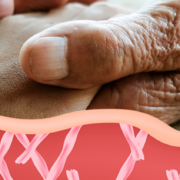How to Gain Weight Without Magic Pills
How many of you took the time to look up the phytonutrient I gave you in Tuesday’s Memo? If you did, you know that it was one of the many phytonutrients in one of my favorite herbs: echinacea. The company that manufactures the weight gain pill called CB-1 claimed one of the ingredients was tested in a clinical trials and helped increase calorie intake for up to two hours.
I searched PubMed for every ingredient on the label, and the only studies I could find showed that some phytonutrients help add finishing weight to cows. There were no human trials related to body weight. Most of the research, especially on the phytonutrients, was related to improving the immune function in humans and animals.
My guess is that the 24-page booklet accompanying the supplement explains how to eat to gain weight: it comes with the purchase of a one-month supply of the product for just $70 plus shipping. So that’s it: no real research and booklet on how to eat. Such a deal!
Gaining Weight
There are some people who really want to gain weight, such as teen athletes and endurance athletes or people who’ve lost too much weight due to illness. Then there are those rare people who’ve always been thinner than they want to be. You might think my response would be to eat more and move less, but no. That course of action may help you get fatter, but it probably won’t be healthy. And the extra pounds may not go where you’d like them to go; how many of us wish for a bigger belly?
Here is the simplest approach. I’ll preface this by saying that anyone who has helped people gain weight probably has a different view, but after 35 years as an exercise physiologist, here’s my approach.
- Increase protein intake by 20 to 40 grams per day. You can use food such as cooked chicken breast with about 10 grams protein per ounce or canned tuna in water at seven grams per ounce. That’s what we did before there were all the protein powders available today. You can measure the powders precisely and mix them in a smoothie or with milk for even more protein.
- Use 10 to 30 grams of branch-chain amino acids (BCAA) and/or essential amino acids (EAA) every day, preferably after exercise. EAAs contain the BCAAs as well, so it’s your preference; both have shown an increase in muscle mass and strength when used in combination with a weight training program.
- Incorporate weight training into your exercise program. There are a hundred different training regimens using everything from exercise tubes to weight training machines. The approach you use depends on your age and fitness level, but if you want to gain weight, you want to increase muscle as well as adding some fat.
That’s it. You already know how to get results based on the recent Memos: be consistent, week in, week out.
The Bottom Line
The focus in health always seems to be on losing weight and with 70% of the population overweight, there’s a reason for that. But if you need to add some weight, the simplest solution is often the correct one. Reasonably increase protein intake together with some of the right amino acids and start a weight training program. No need for magic pills because it’s the effort that gets results.
What are you prepared to do today?









